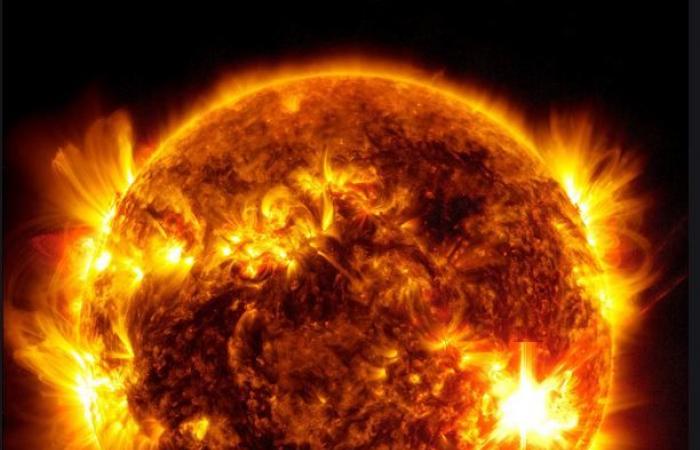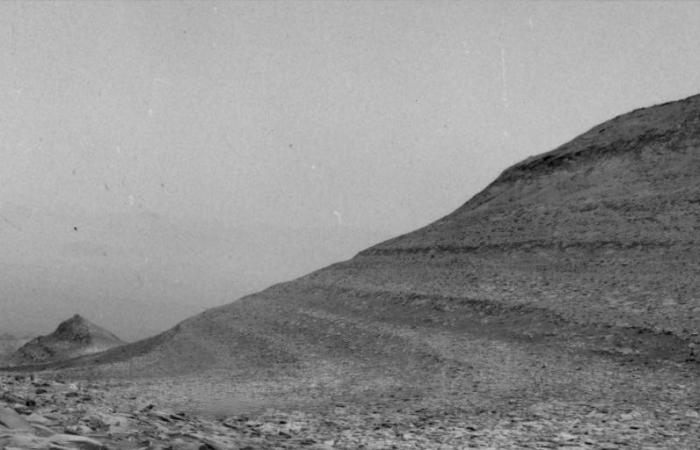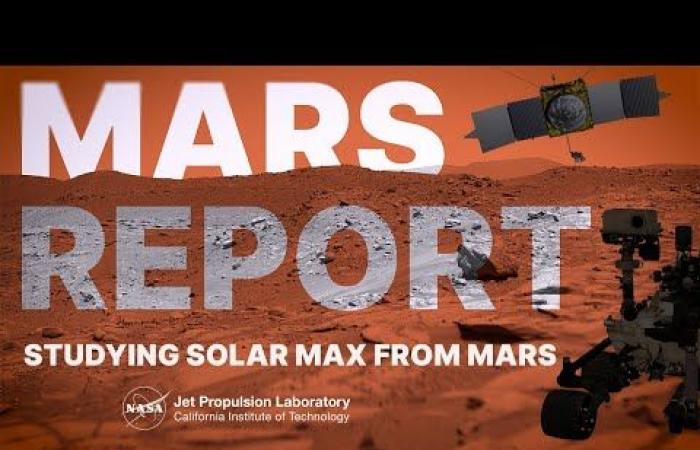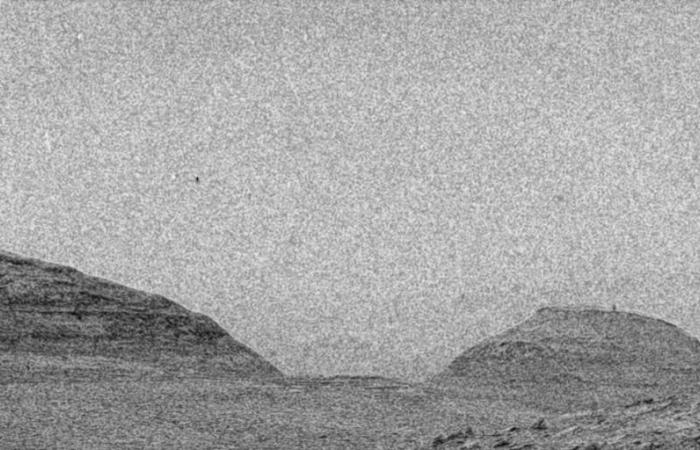In addition to producing auroras, a recent extremely powerful solar storm has provided further details on the amount of radiation future astronauts may encounter on the Red Planet.
Planetary scientists studying Mars predicted the possibility of major solar storms when the Sun entered peak activity called the solar maximum earlier this year. During the month of May, NASA’s Martian rovers and orbiters gave scientists the chance to get a first-hand look at a series of solar flares and coronal mass ejections that reached Mars, in some cases causing Martian auroras.
This trove of scientific data offered an unprecedented opportunity to study how these events unfold in deep space, as well as see how much radiation the first astronauts on Mars might encounter.
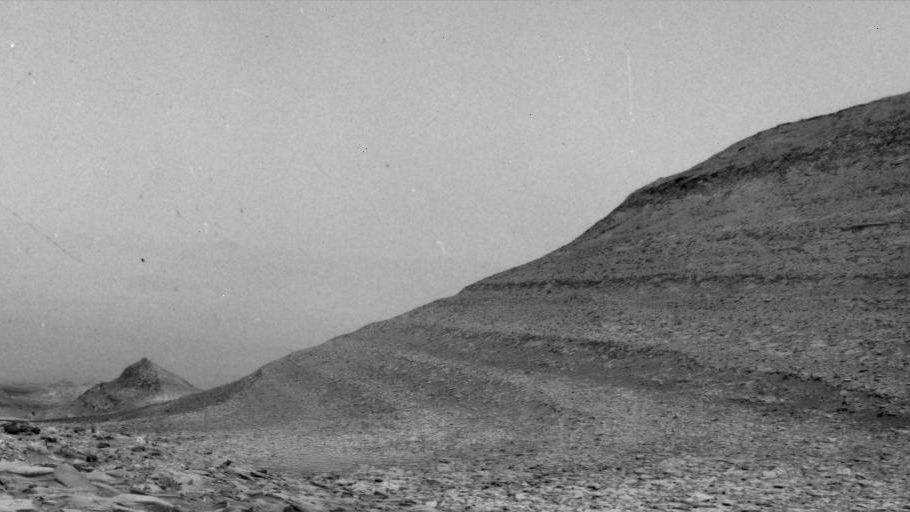
The major event occurred on May 20 with an estimated X12 class solar flare according to data from the Solar Orbiter satellite; among the most powerful ever detected. The flare emitted X-rays and gamma rays towards the Red Planet, while a subsequent coronal mass ejection hurled charged particles into space. Traveling at the speed of light, X-rays and gamma rays were the first to arrive, while slower charged particles reached Mars in a few dozen minutes.
The development of this space weather event has been monitored since Moon to Mars Space Weather Analysis Office at Goddard Space Flight Center from NASA in Greenbelt, Maryland, who estimated the possibility of the arrival of charged particles following the coronal mass ejection. If they had been next to the NASA rover Curiosity at that moment, astronauts would have received a radiation dose equal to 8,100 micrograys, equivalent to 30 chest x-rays simultaneously. Although this was a non-fatal dose, it was the highest peak ever measured by the instrument Radiation Assessment Detector of Curiosity, since the rover landed on Mars 12 years ago. The RAD data will help scientists take countermeasures for the higher level of radiation exposure to which astronauts could be subjected, who however could take shelter in some crevice offered by the morphology of the Martian surface.
«Crags or lava tubes could provide additional shielding for astronauts during events of this magnitude. In Martian orbit or in deep space, the radiation dose would be significantly higher” explained the principal investigator of the RAD instrument, Don Hassler of Solar System Science and Exploration Division of the Southwest Research Institute of Boulder, Colorado. “I wouldn’t be surprised if this active region of the Sun continues to erupt, causing more and more solar storms on both Earth and Mars over the next few weeks.”
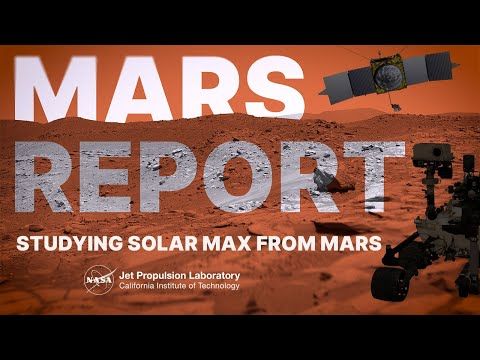
During the May 20 event, the energy that hit the surface of Mars was of such magnitude that it interfered with the functioning of Curiosity’s navigation cameras, causing the classic “snow” effect, with the appearance of streaks and of small white spots due to the impact of the charged particles with the camera sensors.
Similarly, the star camera thatorbiter of NASA Mars Odyssey used to orient itself, was flooded by energy from solar particles, temporarily going out of use. Fortunately, Odyssey had other ways to orient himself and was able to get the camera working again within an hour. Even with the temporary loss of its star chamber, the satellite collected vital data on X-rays, gamma rays and charged particles using its High-Energy Neutron Detector.
This wasn’t Odyssey’s first encounter with a solar flare: in 2003, solar particles from an X45-sized flare burned out the radiation detector designed to measure just such events.
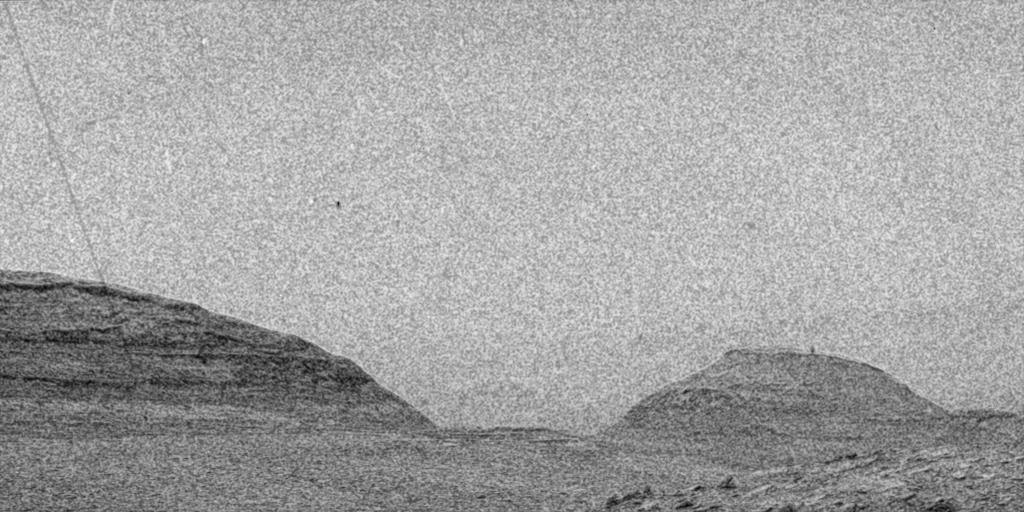
Auroras on Mars
A few hundred kilometers above Curiosity, MAVEN (Mars Atmosphere and Volatile EvolutioN), another NASA orbiter, captured another effect of recent solar activity: bright auroras on the planet. However, the way in which these auroras occur is different from those seen on Earth.
Our planet is shielded from charged particles by a robust magnetic field that normally limits the aurora regions near the poles. Mars lost its internally generated magnetic field in the distant past, so there is no protection against the bombardment of energetic particles. When charged particles hit the Martian atmosphere, auroras form that can engulf the entire planet.
During solar events, the Sun releases a wide range of energetic particles. However, only the most energetic ones can reach the surface to be detected by the RAD. Slightly less energetic particles, those that can cause auroras, are measured by the instrument Solar Energetic Particle by MAVEN. Scientists can use data from this instrument to reconstruct the minute-by-minute timeline of the solar particles’ journey, meticulously analyzing how the event evolved.
“This was the largest energetic particle event that MAVEN has ever observed,” said MAVEN Space Weather Manager Christina Lee of Space Sciences Laboratory from the University of California, Berkeley. “There have been several solar events in the past few weeks, so we’re seeing wave after wave of particles hitting Mars.”
A new probe for Mars
The data from the NASA satellite will not only be useful for future missions to the Red Planet. Indeed they add to the wealth of information that is collected by the agency’s other heliophysics missions that they include Voyager, Parker Solar Probe and the upcoming ESCAPADE mission (Escape and Plasma Acceleration and Dynamics Explorers).
The ESCAPADE mission, scheduled to launch in late 2024, consists of two twin satellites that will orbit Mars and study space weather from their unique dual perspective, in much greater detail than MAVEN can provide.
Sources: NASA
![]() Unless otherwise indicated, this article is © 2006-2024 ISAA Association – Read the license. Our license does not apply to any third party content in this article, which remains subject to the terms of the respective rights holder.
Unless otherwise indicated, this article is © 2006-2024 ISAA Association – Read the license. Our license does not apply to any third party content in this article, which remains subject to the terms of the respective rights holder.

